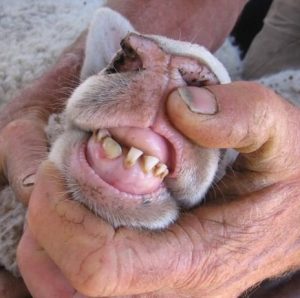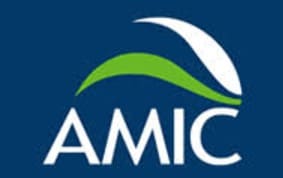
A lamb with one permanent incisor erupted but not in wear.
AUSTRALIA’S new definition for lamb has moved closer to implementation, with changes to the Export Control (Meat and Meat Products) Orders 2005 registered this week.
Minister for Agriculture and Water Resources David Littleproud today announced that the new definition – allowing sheep under 12 months of age with permanent incisors, but not in wear – to be called lamb, has been included in the legislative orders.
However, lamb producers and processors will have to wait for some state regulations to be aligned before the planned implementation of the definition on 1 July this year.
Australia’s new lamb definition is ‘young sheep under 12 months of age or which do not have any permanent incisor teeth in wear’. The previous definition for Australian lamb was a female, castrate or entire male that has no permanent incisor teeth.

Minister for Agriculture David Littleproud
Mr Littleproud said the AUS-MEAT lamb change would bring Australia in line with New Zealand’s definition. It makes sense to have the same definition as our competitors, he said.
“Why would we hand the Kiwis an unfair advantage?
“This is a simple, common sense change which will help our farmers,” he said.
“In Australia, lamb had previously been considered to have grown into the less lucrative “hogget” or mutton as soon as incisor teeth were visible.
“The new export definition is now in the Export Control (Meat and Meat Products) Orders 2005 and matches New Zealand’s and our own new AUS-MEAT definition.”


WA and NSW regulations not yet aligned – SPA
 Sheep Producers Australia’s policy manager Stephen Crisp the change to the export orders is an important milestone in the development of the Australian lamb industry. With these changes approved prior to the approaching Federal Election, the industry is on track for the commencement date of July 1, he said.
Sheep Producers Australia’s policy manager Stephen Crisp the change to the export orders is an important milestone in the development of the Australian lamb industry. With these changes approved prior to the approaching Federal Election, the industry is on track for the commencement date of July 1, he said.
“State regulations in New South Wales and Western Australia still need to be aligned but the relevant authorities have indicated this will occur before the target changeover date.”
For the change to take effect, various federal and state legislation and regulations needed amendment with the new definition, which has been under way since the start of the year.
Sheep Producers Australia said the process for checking whether lambs comply with the new definition will be via a visual inspection – the same process used to verify lambs against the current definition.
In coming months, relevant members of the Australian Meat Industry Language and Standards Committee will inform their respective red meat sectors of the changes and how they can apply the new definition. Mr Stephen Crisp thanked the Mr Littleproud and his department for expediting the change.
New definition to open up market opportunities – AMIC
 Australian Meat Industry Council chief executive officer Patrick Hutchinson said the introduction of much-anticipated changes to Australia’s lamb definition is a win for the red meat sector which will open up new market opportunities.
Australian Meat Industry Council chief executive officer Patrick Hutchinson said the introduction of much-anticipated changes to Australia’s lamb definition is a win for the red meat sector which will open up new market opportunities.
“Australian lamb producers will now have a clear physical signal to inform their selling decision.
“This in turn will create markets for unfinished lambs that buyers might previously have had reservations about, for fear of the lambs crossing the threshold to hogget,” he said.
Mr Hutchinson said Australian processors will now have access to lambs at the cross-over period between new season lambs and those from the previous season.
“What this update delivers is confidence that producers are able to finish those lambs to a better quality without concern that they will miss the lamb specification.
“This added layer of clarity is excellent news for processors and producers, and it is good news for retailers and consumers, too,” he said.
“We can expect to see an improved supply of lamb in store as producers confidently carry lambs through winter.
“There are benefits all through the supply chain.”
Mr Littleproud’s release said research by Meat & Livestock Australia found no discernible difference in eating quality between lambs immediately prior to incisor teeth and immediately afterwards.
Meat from a female or castrate male sheep has one but no more than two permanent incisors, with any males showing no evidence of secondary sexual characteristics will still be known as either hogget, yearling mutton or yearling sheep meat.



What’s next: calling yearling veal? New Zealand still does itself no favours, with imported food processed in NZ still called a product of New Zealand. Has Coles been selling mutton as lamb, hence the new definitions? Previously I’ve bought shanks labelled as lamb, but crickey mum, they would have been as big as a cow. How now do I tell, apart from size, what is what? Does lamb mince contain mutton?
I’m very disappointed, as most paddock to plate eaters want the knowledge of what, where and how, and now you’ve rewritten what an animal is. I’m looking forward to the milk fed mutton.. really guys, you’ve lost the plot.